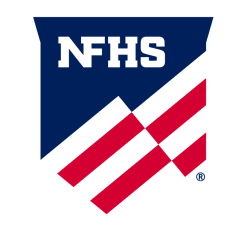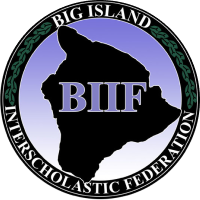The NFHS Voice

 The NFHS Voice
The NFHS Voice
As Another High School Season Begins, Heat Awareness Must Remain Top Priority
Dr. Karissa L. Niehoff, NFHS Executive Director
Practices for high school sports and band programs have been underway for several weeks in many parts of the country, and more than 3.5 million participants in high school fall sports are hoping to carry the excitement and enthusiasm of the recently completed Olympics into school competition. And practices quickly turn to the start of another season this week.
In football alone, Friday Night Lights begin in four states – Alaska, Hawaii, Nevada and Georgia – and 17 more kick off next week. Another 22 states begin competition the final week of August, with the final eight starting in early September.
In addition to the one million-plus participants in football this fall, high school students are gearing up for another season in cross country, soccer, field hockey, marching band and other sports and activities. And while some parts of the country have experienced a milder summer this year, warmer temperatures have started to build this month. Heat awareness must continue to be a top priority as teams continue with practices and transition to game competition.
Earlier this month, the NFHS distributed information about heat concerns and air quality to NFHS member state associations. The NFHS Sports Medicine Advisory Committee noted that heat concern is not just a football issue. Any student participating in an outdoor sport or activity in the heat is vulnerable to heat illness, including marching band, cheer and players practicing in hot gyms without air conditioning.
One heat-stroke death is too many because Exertional Heat Stroke (EHS) is preventable. Even with one million participants in high school football, death from heat stroke is preventable. Coaches, athletic directors and athletic trainers must have effective prevention plans in place so that student participants are fully protected from heat-related illnesses and injuries.
The SMAC has developed a “Heat Acclimatization and Heat Illness Prevention Position Statement” which is available on the NFHS website. This document contains seven fundamentals of a Heat Acclimatization Program. In addition, the SMAC’s “Position Statement and Recommendations for Maintaining Hydration to Optimize Performance and Minimize the Risk for Exertional Heat Illness” is also available on the sports medicine page of the NFHS website.
Through the NFHS Learning Center, the NFHS offers a free online course entitled Heat Illness Prevention. This course, which is available at www.nfhslearn.com, also reviews the seven fundamentals of a Heat Acclimatization Program. About three million Heat Illness Prevention courses have been accessed. In addition, to address the necessary precautions for participants in marching band, the NFHS has a free course entitled Band Safety.
Among the fundamentals of a Heat Acclimatization Program are 1) a slow progression in activity level – duration and intensity; 2) adjusting workouts as heat and humidity increase, including close monitoring and a prompt response to developing problems; and 3) proper hydration.
Three other Learning Center courses should be a part of the preseason planning for all key members of the school’s team: The Collapsed Student, Sudden Cardiac Arrest and Concussion in Sports.
As an additional resource, the NFHS Foundation announced a grant program two years ago to distribute 5,000 Wet Bulb Globe Temperature (WBGT) devices to high schools across the country. The WBGT measures the heat stress in direct sunlight, accounting for temperature, humidity, wind speed, sun angle and cloud cover. High schools can use the thermometer’s reading to help determine if the weather is appropriate to hold outdoor activities. The NFHS Foundation provides a video on proper use of WBGT.
School leaders must also make sure that AEDs (Automated External Defibrillators) are available in key locations in the school, and that an Emergency Action Plan has been established and rehearsed. There were numerous cases on high school sports fields and courts last year where quick action on the part of individuals saved lives, and we hope that trend continues. As a part of preseason planning, coaches and administrators should consider another Learning Center course – CPR & AED Training.
The NFHS Foundation has been instrumental the past few years in providing AEDs to state associations. This year, the Foundation is providing 50 percent of the costs of about 850 AEDs for use by state associations and schools, after providing more than 1,000 units to schools and states several years ago.
School leaders must continue to take EHS seriously. We encourage all school leaders – coaches, band directors, athletic directors and others – to take the free online courses – Heat Illness Prevention and Band Safety – at www.nfhslearn.com. It could be the best investment of time this year.
Dr. Karissa L. Niehoff is in her seventh year as chief executive officer of the National Federation of State High School Associations (NFHS) in Indianapolis, Indiana. She is the first female to head the national leadership organization for high school athletics and performing arts activities and the sixth full-time executive director of the NFHS. She previously was executive director of the Connecticut Association of Schools-Connecticut Interscholastic Athletic Conference for seven years.









